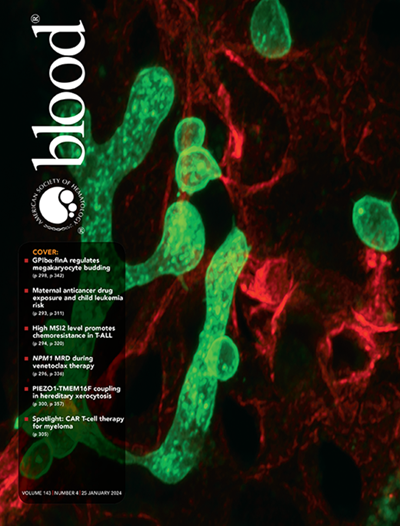小鼠和人类生命周期中血液干细胞的克隆追踪。
IF 23.1
1区 医学
Q1 HEMATOLOGY
引用次数: 0
摘要
60多年来,血液研究人员一直在用他们可以使用的每一种工具来计算克隆。受噬菌体和苍蝇遗传学家的启发,蒂尔和麦卡洛克对小鼠进行了辐射,以诱导染色体畸变。利用这种标记策略,他们证明了不同类型的血细胞在每个脾脏集落中共享相同的突变,从而证明了造血干细胞的存在。自从他们取得突破以来,技术进步使研究人员能够在越来越复杂的小鼠和人类样本中以单细胞分辨率量化造血。有了这些现代复杂的血统追踪方法,我们对血液系统的基本理解正在被重塑。例如,我们现在将造血结构解释为起源于不同发育起源的干细胞和祖细胞,每个细胞都有独特的调控状态编码的不同命运偏见。与这一调控层相互作用,基因突变和增殖出现,无性扩展,并随着年龄的增长而变得普遍。总之,克隆异质性和年龄驱动的克隆选择可能是癌症及其他疾病治疗反应的复杂多样性的基础。随着这些范式转变的见解获得关注,克隆追踪正在数十个生物学和临床研究中被采用。在此,我们回顾了现代克隆跟踪技术工具箱,重点介绍了基于下一代测序的方法,并为匹配特定研究问题与最佳实验策略提供了实用指南。本文章由计算机程序翻译,如有差异,请以英文原文为准。
Clonal tracing of blood stem cells across mouse and human lifespans.
For over sixty years, blood researchers have been counting clones with every tool at their disposal. Inspired by phage and fly geneticists, Till and McCulloch irradiated mice to induce chromosomal aberrations. Using this labeling strategy, they demonstrated that different types of blood cells shared the same mutation in every spleen colony, thereby proving the existence of hematopoietic stem cells. Since their breakthrough, technological advances have enabled researchers to quantify hematopoiesis at single-cell resolution in increasingly complex samples across both mice and humans. With these modern sophisticated lineage tracing methods, our foundational understanding of the blood system is being reshaped. For instance, we now interpret hematopoietic architecture as arising from stem and progenitor cells of diverse developmental origins, each with distinct fate biases encoded by unique regulatory states. Interacting with this regulatory layer, genetic mutations and epimutations arise, expanding clonally and becoming pervasive with age. Together, clonal heterogeneity and age-driven clonal selection may underlie the perplexing diversity of therapy responses in cancer and beyond. As these paradigm-shifting insights gain traction, clonal tracing is being adopted across dozens of biological and clinical studies. Here, we review the modern toolbox of clonal tracking technologies, with a focus on next-generation sequencing-based approaches, and provide a practical guide for matching specific research questions with optimal experimental strategies.
求助全文
通过发布文献求助,成功后即可免费获取论文全文。
去求助
来源期刊

Blood
医学-血液学
CiteScore
23.60
自引率
3.90%
发文量
955
审稿时长
1 months
期刊介绍:
Blood, the official journal of the American Society of Hematology, published online and in print, provides an international forum for the publication of original articles describing basic laboratory, translational, and clinical investigations in hematology. Primary research articles will be published under the following scientific categories: Clinical Trials and Observations; Gene Therapy; Hematopoiesis and Stem Cells; Immunobiology and Immunotherapy scope; Myeloid Neoplasia; Lymphoid Neoplasia; Phagocytes, Granulocytes and Myelopoiesis; Platelets and Thrombopoiesis; Red Cells, Iron and Erythropoiesis; Thrombosis and Hemostasis; Transfusion Medicine; Transplantation; and Vascular Biology. Papers can be listed under more than one category as appropriate.
 求助内容:
求助内容: 应助结果提醒方式:
应助结果提醒方式:


